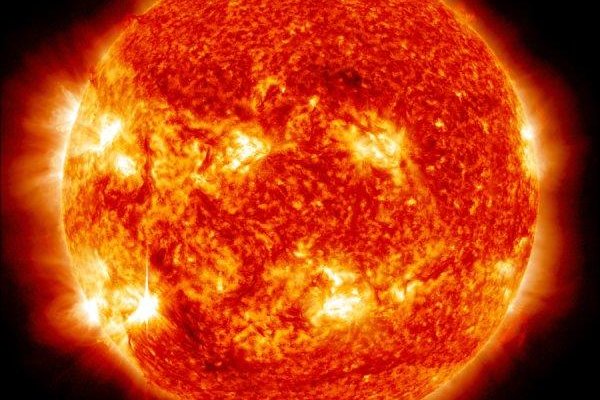Scientists traced the movement of sunspots and found large-scale wave patterns similar to those found in Earth's atmosphere, according to a recent study. Photo by NASA/SDO
March 27 (UPI) -- Scientists at the National Center for Atmospheric Research have discovered Rossby waves on the sun. The large-scale planetary waves were first discovered on Earth.
On Earth, Rossby waves are correlated with local weather events. On the sun, scientists suggest the waves could influence solar activity and related phenomena, like sunspots and solar flares.
"The discovery of magnetized Rossby waves on the Sun offers the tantalizing possibility that we can predict space weather much further in advance," lead researcher Scott McIntosh said in a news release.
Rossby wave patterns are unique to rotating fluids, like the atmosphere and the ocean. The sun's upper layers are mostly plasma and rotate. Scientists have previously hypothesized that the sun could host Rossby waves, but observing wave patterns on the sun is difficult.
Researchers are able to pick out wave patterns on Earth using dozens of satellites and instruments, which observe physical phenomena from a variety of vantage points. Solar scientists are able to observe the sun from a single vantage point.
Recently, a trio of satellites and spacecraft offered astronomers varied solar perspectives. Researchers supplemented data collected by NASA's Solar Dynamics Observatory, a probe circling halfway between the sun and Earth, with observation from a pair of satellites with NASA's Solar TErrestrial RElations Observatory mission.
"By combining the data from all three satellites we can see the entire sun and that's important for studies like this because you want the measurements to all be at the same time," explained Dean Pesnell, SDO project scientist at NASA's Goddard Space Flight Center. "They're pushing the boundary of how we use solar data to understand the interior of the sun and where the magnetic field of the sun comes from."
In tracing the movements of coronal bright points on the sun's surface, researchers identified cohesive bands of magnetized activity -- Rossby-like waves moving across the solar surface. Researchers shared their discovery in the journal Nature Astronomy.
Scientists believe the waves could be linked with the 11-year solar cycle, as well as solar phenomena like coronal mass ejections and solar flares.
"It's possible that it's all tied together, but we needed to have a global perspective to see that," McIntosh said. "We believe that people have been observing the impacts of these Rossby-like waves for decades, but haven't been able to put the whole picture together."
Further research is needed to explore the predictive abilities of the newly discovered patterns. But first, scientists say they need better data.
"To connect the local scale with the global scale, we need to expand our view," McIntosh said. "We need a constellation of spacecraft that circle the Sun and monitor the evolution of its global magnetic field."















